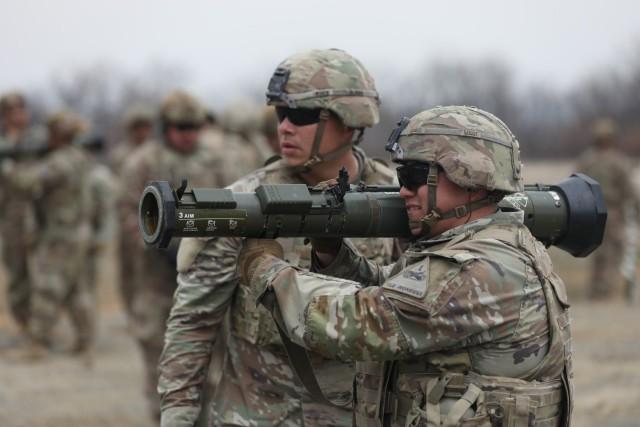Transforming in Contact 2.0: Army Stresses Significance of Conducting Combined Ops
The 1st Armored Brigade Combat Team, 3rd Infantry Division, is the first transforming in contact (TiC) armored unit to participate in exercise Combine Resolve 25-02.
The exercise, held at the Joint Multinational Readiness Center in Hohenfels, Germany, is focused on enhancing combined arms interoperability and readiness in the European theater and is conducted under U.S. leadership with participation from NATO and partner nations.
“In many ways, transforming in contact has unlocked our formations here by prioritizing our immediate needs,” said Maj. Gen. Christopher Norrie, 3rd Infantry Division commanding general.
The Brigade is spearheading the second phase of the Army’s “Transforming in Contact” initiative, also known as TiC 2.0. It serves to revamp how units rapidly equip, test and acquire technology in a changing battlefield.
Norrie emphasized the importance of combined arms operations during a media roundtable on Tuesday.
"It’s not just tanks, it's not just infantry, it's not just aviation or artillery,” Norrie said, “but it's all those things working together as a combined arms team. Being able to do that as a combined arms team at scale and at night, we believe in our souls that that's how we win.”
Norrie said the brigade combat team consists of approximately 1,250 vehicles, 87 tanks, 125 Bradleys and 18 Paladins.
“The ammunition net explosive power of an armored brigade combat team’s basic load of ammunition is just over 50 tons, which is equivalent to five GBU-43s. And, as you know, GBU-43 is colloquially called the mother of all bombs,” Norrie said.
Norrie shared that his team also had a big focus on prolonged field care for soldiers who get injured on the battlefield.
“Instead of putting those soldiers in further danger by moving across the battlefield during the day, I have focused the team on evacuating at night under limited visibility, which makes the tactical situation favorable for us,” he explained.

In many ways, transforming in contact has unlocked our formations here by prioritizing our immediate needs.
The brigade will increase night training and medical innovation, developing field care techniques such as blood transfusions.
“We learned a tremendous amount about counter UAS from the 10th Mountain Division in integrating UAS [unmanned aircraft systems],” Norrie said, “also [about] working on the electromagnetic spectrum to sense and strike, and deception as well.”
Col. Jim Armstrong, 1st Armored Brigade Combat Team commander, 3rd Infantry Division, explained the brigade is ready to enter a “battle period” with drones that were developed and 3D printed at a drone laboratory.
“We’re very fortunate to be the first armored brigade combat team to be able to help the armored force learn about transformation in contact, how to fight differently,” Armstrong said. “And we’re seeing results already.”
“We really are proud to be forging the future of armor here at the 3rd Infantry Division,” Norrie said.





Comments